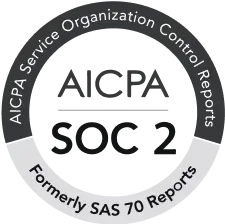In the ever-evolving world of decentralised finance (DeFi), investors are constantly presented with new ways to grow their wealth. Two of the most popular options today are staking rewards and interest accounts. While both offer opportunities to earn passive income, they operate in fundamentally different ways. However, successfully navigating these choices requires a solid grasp of their mechanics and potential returns. In this blog, we’ll simplify the essentials, guiding you on how to make the most of these opportunities for financial advancement in the ever-changing landscape of DeFi.
What Are Staking Rewards?
Staking rewards are a cornerstone of blockchain networks that use Proof of Stake (PoS) or similar consensus mechanisms. In PoS, instead of miners solving complex mathematical problems (as in Proof of Work), validators are chosen to confirm transactions and create new blocks based on the amount of cryptocurrency they “stake” or lock up in the network.
Here’s how it works:
- You lock up a certain amount of cryptocurrency in a staking wallet or platform.
- Your staked tokens contribute to the network’s security and operations.
- In return, you earn rewards, typically in the form of additional tokens.
Staking rewards are often seen as a way to support the blockchain ecosystem while earning passive income. The rewards you earn depend on factors like the network’s inflation rate, the total amount of tokens staked, and the duration of your staking commitment.
What Are Interest Accounts?
Interest accounts, on the other hand, are more traditional in nature and resemble savings accounts offered by banks, but with a DeFi twist. In the crypto world, interest accounts allow you to deposit your assets (like Bitcoin, Ethereum, or stablecoins) into a platform that lends them out to borrowers or uses them in other yield-generating activities.
Here’s how it works:
- You deposit your crypto assets into an interest-bearing account.
- The platform lends your assets to borrowers or invests them in DeFi protocols.
- You earn interest on your deposit, usually paid out in the same cryptocurrency.
Interest accounts are often favored for their simplicity and flexibility. Unlike staking, your assets aren’t locked up, and you can typically withdraw them at any time (though this depends on the platform).
Key Differences Between Staking Rewards and Interest Accounts
While both staking rewards and interest accounts offer ways to earn passive income, they differ in several key aspects:
1. Purpose and Mechanism
- Staking Rewards: Staking is inherently tied to blockchain operations. By staking, you’re actively participating in the network’s consensus mechanism, helping to secure and validate transactions.
- Interest Accounts: These are purely financial products. Your assets are used to generate yield through lending, trading, or other DeFi activities, but you’re not directly contributing to a blockchain’s operations.
2. Lock-Up Periods
- Staking Rewards: Staking often requires you to lock up your tokens for a specific period. Unstaking can take time (sometimes days or weeks), and there may be penalties for early withdrawal.
- Interest Accounts: Most interest accounts offer more flexibility. While some platforms may have lock-up periods for higher yields, many allow you to withdraw your funds at any time.
3. Risk Profile
- Staking Rewards: Staking carries risks like slashing, where you can lose a portion of your staked tokens if the validator you’re staking with behaves maliciously or goes offline. Additionally, the value of your rewards can fluctuate with the price of the staked token.
- Interest Accounts: The primary risks here are platform risk (e.g., the platform getting hacked or going bankrupt) and smart contract risk (e.g., vulnerabilities in the code). However, your principal isn’t directly tied to the performance of a blockchain network.
4. Reward Structure
- Staking Rewards: Rewards are typically paid in the same token you’re staking. The yield is often variable and depends on network activity and the total amount of tokens staked.
- Interest Accounts: Interest can be paid in the same token or in a different one (e.g., earning ETH on a USDC deposit). The rates are usually fixed or semi-variable, depending on the platform.
5. Accessibility
- Staking Rewards: Not all cryptocurrencies support staking. It’s primarily available for PoS coins like Ethereum 2.0, Cardano, Solana, and others.
- Interest Accounts: Almost any cryptocurrency can be deposited into an interest account, including Bitcoin, Ethereum, and stablecoins like USDC or DAI.
Which One Should You Choose?
The choice between staking rewards and interest accounts ultimately depends on your financial goals, risk tolerance, and the assets you hold. Here’s a quick guide to help you decide:
Choose Staking Rewards If:
- You’re a long-term believer in a specific blockchain project and want to support its ecosystem.
- You’re comfortable with locking up your tokens for a period of time.
- You’re willing to take on the risks associated with staking, such as slashing and price volatility.
Choose Interest Accounts If:
- You want more flexibility and access to your funds.
- You’re looking for a simpler, more traditional way to earn passive income.
- You want to diversify your portfolio by earning interest on a variety of assets.
Final Thoughts
Staking rewards and interest accounts are both powerful tools for earning passive income in the crypto space. While staking allows you to actively participate in blockchain networks and earn rewards, interest accounts offer a more flexible and straightforward way to grow your wealth. The key is to understand the differences, assess your risk tolerance, and choose the option that aligns with your financial goals.
Disclaimer: Virtual assets carry significant risks, including high volatility and potential loss of your entire investment. They are not backed by governmental protections, and recourse may be limited in case of loss. Always assess your risk tolerance, fully understand the risks, and seek independent financial advice if needed before investing.
Frequently Asked Questions
- Which option offers higher returns: staking rewards or interest accounts? Staking rewards can sometimes offer higher returns, especially if the underlying cryptocurrency is volatile or has high staking yields. Interest accounts, however, may provide more stable, but generally lower, returns.
- Are staking rewards guaranteed like interest account returns? No, staking rewards are not guaranteed. They depend on factors like network performance, validator uptime, and inflation rates of the cryptocurrency. Interest accounts, on the other hand, may offer more predictable returns but come with their own risks.
- Are there risks associated with staking rewards? Yes, staking can involve risks such as slashing (penalties for misbehaviour), loss of staking funds due to network issues, and volatility in the underlying asset.
- What are the risks of using interest accounts? Risks with interest accounts include counterparty risk, where the platform may fail or misuse funds, and the potential for liquidity issues if the platform uses the deposited assets for lending.
- Can I withdraw my funds anytime from staking or interest accounts? Staking often involves a lock-up period, meaning your funds are tied to the network for a certain duration. Interest accounts may offer more flexibility, but they also vary by platform and asset type.







